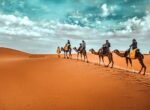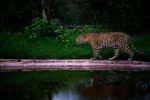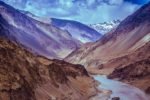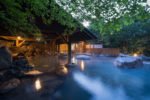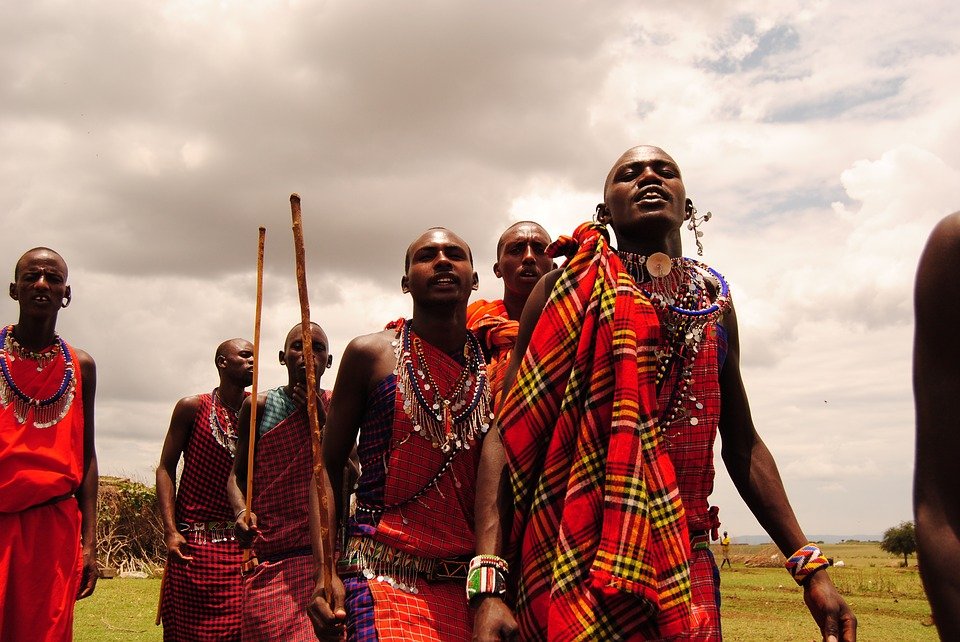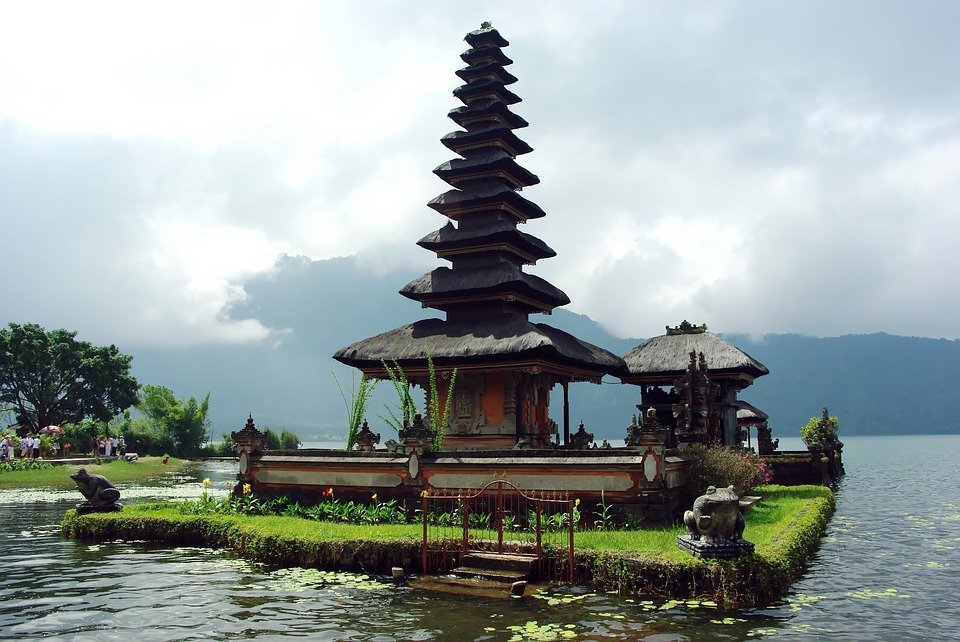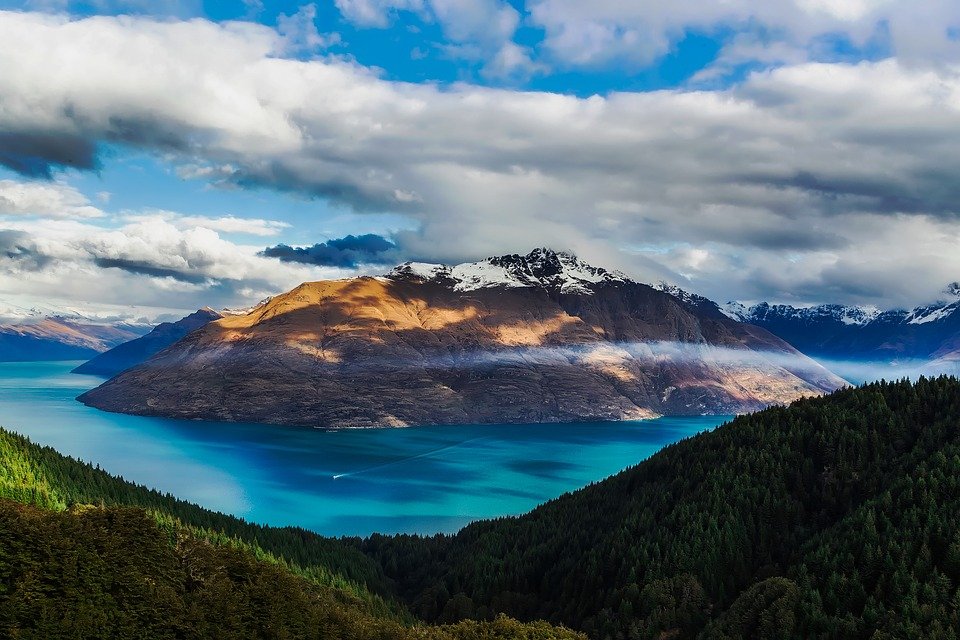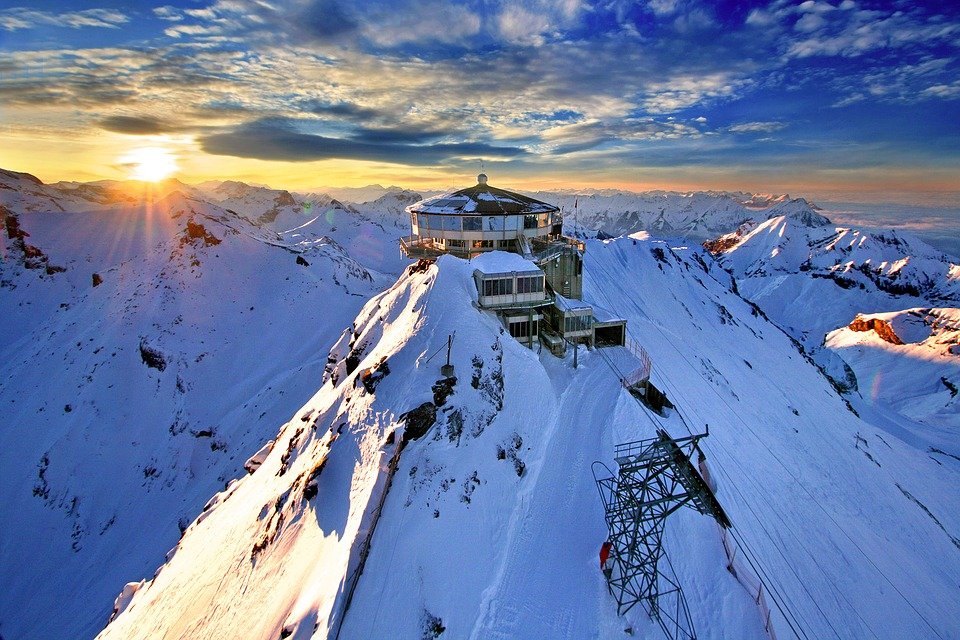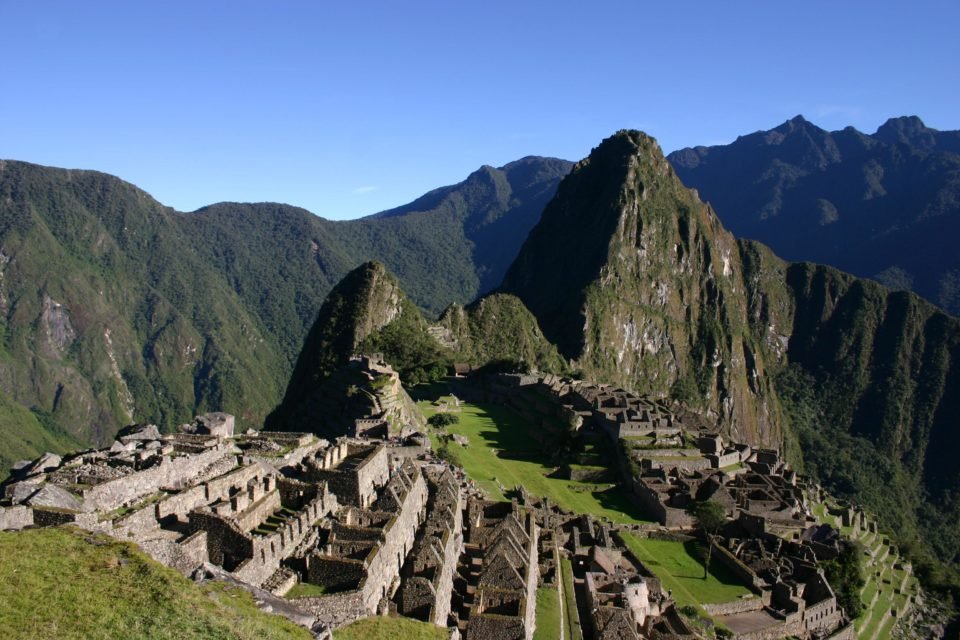There was a time when I used to stay in Pachmarhi, coming to cities used to be so exciting. Really!
Eyes would glow simply at the site of so many shops as there was hardly any shopping market in Pachmarhi. Limited things, limited choices.And now that we have been staying in Bangalore for so many years, we want to settle down either in a beach destination or a hill station or a jungle. Paradox of human behavior. Guess, someday we shall all go back to farming, stay as close to nature as possible and adopt a simple living.Till that time comes, am taking as many breaks as possible to run to jungles to immerse myself in the purity of nature and rawness of the wild.
Have been wishing to dedicate one full year to wildlife for quite some time now. But before I fulfill my dream of going to Kenya and Tanzania as well to experience wildlife at its best, let me jot down a few wildlife destinations in India that are well known for big cats. In fact the list of wild life destinations in India is very long, as there are 89 national parks, 13 Bio reserves and 400+ wildlife sanctuaries to see tigers, lions, elephants, rhinoceros, birds, and even more.
However, I definitely want to mention one point here… Be it any national park or a sanctuary, please don’t go to jungle like to you go to watch Mr. Bachchan’s movie. You see him and you feel money worth spent (paisa vasool). Wildlife is different .You may or may not really come across the Amitabh bachhans or Shahrukh khans of the wild jungle during your safari.
Recently at Rantambore, I was quite surprised at the reactions of a few fellow passengers when they couldn’t spot a single tiger till the end of the safari. Spotting any big cat variety does require immense patience, preparation and luck for sure. Also, there is a lot more besides the lions and tigers in any jungle so lets try learning to experience and enjoy the jungle first. The language and rules of jungle, its air, its water, its fragrance, the variety of calls(sounds), the flora & fauna and other animals besides the big cats, birds, insects all together make the beautiful ecosystem.
Coming back to my list so here it is.
Best National Parks in India—Top 10 wildlife sanctuaries
-
Naharhole forest in Karnataka
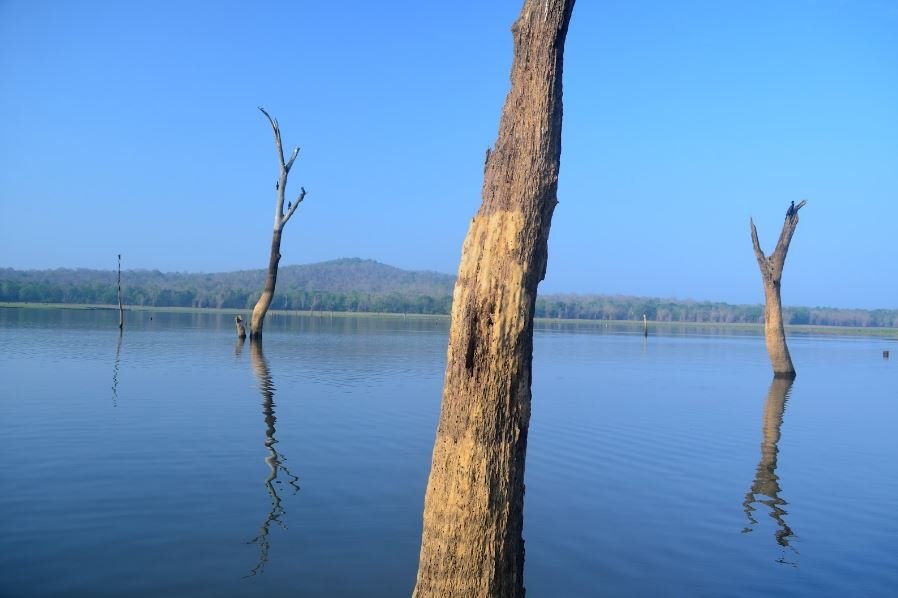
The national park covers approx 643 sq km area and comes under Kodagu and Mysore districts of Karnataka. This is part of 6000 sq km of Nilgiri Bio reserve and is located to the north west of Bandipur national park . In fact Mudumalai, Bandipur, Nagarhole and Waynad wild life century all are connected and form the largest wildlife protected area of 2000 plus sq kms in south India. To visit Nagarhole forest, one should ideally stay near Kabini river which separates Bandipur forest from the Nagarhole forest area.
Since 1999 , this park also comes under tiger reserve. Forests in south are beautifully green and have more water sources like streams, waterfalls which contributes to rich flora and fauna in the area.Sightings in these areas require a little more luck as the area is huge given the adjoining parks and centuries plus the forests are thicker.
Advantage is unlike Corbett and Ranthambore in north, there is no rush for safari bookings in south. In Nagarhole Jungle lodges & resorts runs the safari in collaboration with the forest department. Besides, you can also contact the forest department after reaching there and book directly. Most of the good hotels will take care of the safari bookings.
Open jeep safari is the ideal way to experience flora and fauna of these jungles too. In addition, Karnataka forest department also offers open bus safari for which the ticket can be bought at the counter itself. There are 400+ species of animals and birds in this area and beautiful kabini river which makes this jungle all the more tempting.
-
Corbett National Park in Uttarakhand
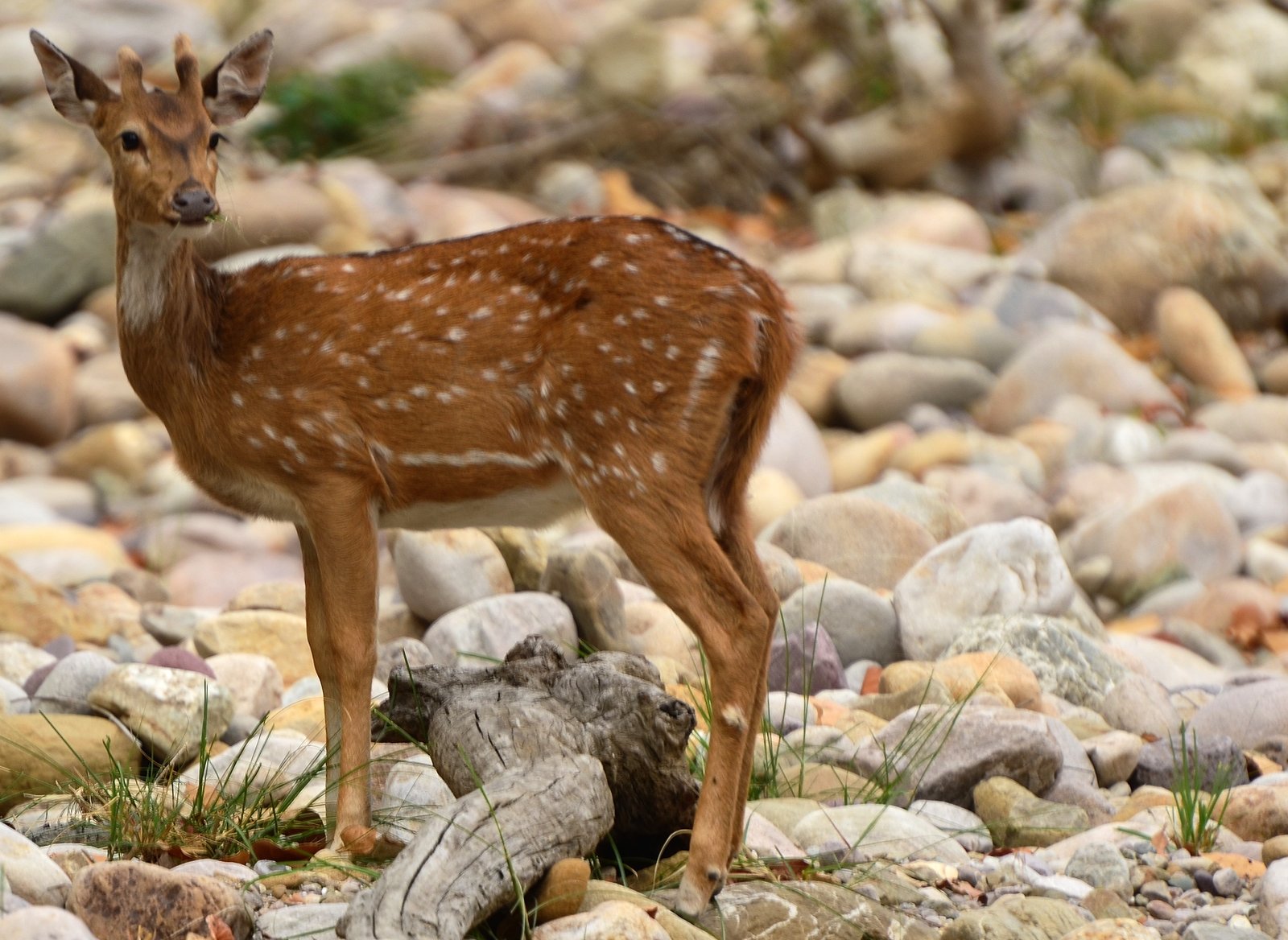
Named after Jim Corbett, this is one of the beautiful forests that we have seen.Also, the oldest national park , this lies in Nainital district of Uttarakhand and the first one to be established as protective zone to protect endangered bengal tiger. The park has 520 sq km of core area and 792 sq km of buffer area. Total of 110 tree species, 50 species of mammals, 580 bird species and 25 reptile species have been recorded in this area.
In Corbett, you have options do to a jeep safari or a canter safari. There are five different zones of the park namely Bijrani, Jhirna, Dhikala, Dhela and Durgadevi. First three are the preferred zones. Click on the link below to do the bookings
https://www.corbettonline.uk.gov.in/

Tip- Stay in Dhikhala forest zone in the forest guest houses or else you can visit Dikhala only by canter which is not a very good experience for photographers especially. This is the most beautiful forest area and the chances of sightings are higher in Dhikhala zone hence stay in the forest for the real jungle experience. Book the accomodation and the tour online using the link above
-
Ranthammbore National Park in Rajasthan

One of the most popular wildlife parks in north India. It comes in Sawai Madhopur district of Rajasthan, nearly 130 kms from Jaipur, the capital.The nearest rail head for Ranthmbore is Sawai Madhopur station. I recently visited Ranthambore in April. Drove down from Kota instead of taking a train. Good and comfortable roads. Ranthambore national park covers an approx 400 sq kms of area. The park area is comparatively smaller and the tigers here have gotten used to of human presence and hence that makes the park, photography enthusiasts’dream for the exciting and frequent tiger sightings.
There are 8 safari zones and two options to get into the zone, Jeep and Canter. Most importantly you should book the safari online well in advance and ideally a Jeep as in the canter you have many people and more constraints.The canter doesn’t stop as and when you would want it to, it only stops when the driver feels it is worth stopping by.
Most preferred zones are 2,3 and 4 but that doesn’t mean you would necessarily see tigers here and not in 5,6 or 7. I wasn’t able to get a jeep safari for route 3 and hence had settled for a canter instead of taking a jeep for route no 6 which was available. Everyone there talks about route no 2,3 or 4 and hence I was also adamant about the zone no 3. To my hard luck, we couldn’t see any tiger in route no 3 as the canter wasn’t allowed in the area where a tiger was sitting next to its kill.
On the other hand, our neighbors at hotel who had chosen a jeep safari for route no 6 had sighted a tigress for more than an half hour very near to their vehicle, on the same day. So information is of utmost importance meaning take routes where the sightings have happened the same day or a day before since these animals stay near the kill or around it for couple of days. Another case could be when the tigress gives birth, she is most likely to be found in and around the same place.
But here is a catch 22 situation. If you wait for the relevant information after reaching there, you may not get the jeep at all. 80% of the booking are online and only 20% or so are allowed over the counter in Ranthambore forest office. Jeeps are in high demand with sons of all MLAs, Judges and VIPs visiting jungle only when you need to book at the counter. Hence common people like us should book in advance .The official site to book safari online has been changed – Please login to http://fmdss.forest.rajasthan.gov.in/
-
Kanha National Park in MP

If Nainital jungles inspired Jim Corbett, Kanha in the heart of India inspired Rudyard Kipling for his jungle book. One can reach Kanha national park nestled in the Maikal range of Satpuras in Madhya Pradesh either via Jabalpur or via Nagpur.It covers an area of approx 950 sq kms much larger than Corbett and along with the buffer zone of 1945 sq kms, it forms the largest national park in central India.
Famous for the wide diversity of wild life , forests of Banjar and the Halon valley form the western and eastern halves of the Kanha Tiger Reserve. There are two key main entrance gates- Khatia & Mukki . Khatia entrance gate falls on Mandla district well connected from Jabalpur & Nagpur. While Mukki on Balaghat district of M. P. State covers Mukki range of the national park
Kanha is home to many wild creatures; from tigers to the most populated Barasingha and the numerous species of flora and fauna. Ideal time is from October to June.Ideal location here to enjoy the most is the Bammi Dadar, also known as the Sunset Point. One has the option of Jeep as well as Elephant safari which directly takes one to the widespread arena of the lush habitat of these majestic wild creatures. Kanha park management has recently introduced canter as well which is an economical way to experience the wild .
A single day safari can be done twice, morning and evening. A jeep can have max 6 people plus the driver and a naturalist. There are 4 zones, Kisli, Kanha, Mukki and Sarhi. Number of Jeeps vary for each zone ranging from 18 to 40. Booking of safari is done in advance, some of the online booking agents mention min 120 days requirement for advance booking. You can either make safari bookings through your hotel or online.
-
Bandhavgarh in MP

Bandhavgarh in known to have one of the highest density of Bengal tigers, and is home to some famous tigers which are large in size and are beautiful including Sita, a tigress who once appeared on the cover of National geographic magazine. Sita in Bhandavgarh is also considered the second most photographed tiger in the world.Besides tigers, it has large population of leopards and varieties of deer.
There is 3 Core Zones in Bandhavgarh (Tala Zone is Premium Zone) to visit – Tala Zone, Maghadhi Zone and Khitauli Zone. There is 1 buffer Zone also where you can see Cheshpur Water Fall in Johila River. Bhandavgarh falls in the Umariya district of MP and covers 105 sq km of area and including buffer zone which is spread across Umariya and Katni in MP, the area becomes 820 sq km. The park features dense green valleys and rocky hill terrain, along with an ancient fort known as Bhandhavgarh fort built at 2000 plus ft high cliffs. The park gets its names from the same most prominent hillock in the region.
Bhandhavgarh has quite a few high end and luxury resorts and is an expensive national park however the best part is once you are here in Madhya Pradesh, you can also visit the adjoining kanha and pench national parks as well.
-
Pench National Park in MP & Maharshtra
Had heard about Pench from one of the couples I had met at Gir. They had sighted a tigress along with her cubs at Pench which was one of the most wonderful memories of their wildlife travels. Since then Pench has been on my bucket list. Interestingly Pench is also associated with Rudyard Kipling’s jungle book.
The Reserve is just 70km from Nagpur . And the park gets its name from the Pench river that flows through the reserve. It is almost 74kms long that divides the Park into eastern half and western half which falls in Seoni and Chindwara districts respectively. The added attraction to this park is the river water rafting. Pench National Park comprises 758 sq km, out of which 299 sq km forms the core area, the Pench National Park core area and Mowgli Pench Sanctuary. The remaining 464 sqkm forms the buffer zone. To book safari online click here
-
Tadoba Wildlife Sanctuary in Maharashtra

Maharashtra’s oldest and largest national park, Tadoba Andhari has a total area of 625 sq km and is known for low forested hills, beautiful meadows, lakes and deep valleys.Interestingly despite having low no of tigers when compared to other parks, this forest provides greater accessibility and sightings of many wild animals. Majority of this forest falls in hilly region.The nearest airport is Nagpur and the nearest rail head is Chandrapur.
Tadoba Andhari derives its name from ‘Taru’ God and Andhari river. There are a few lakes in Tadoba which ensure the availability of water and flourishing aquatic life including marsh crocodiles. Irai lake is one well known among tourists.Popular entrance gates include Mohurli, Kolara, Navegaon, Khutwanda etc.
Today, Tadoba has become all the more popular for the number of individual tigresses and cubs comfortable with vehicles.Besides the park hosts other major wildlife attractions too like shaggy Sloth bears, wild dogs, huge Gaur, leopard, crocodile, and ofcourse the deer and antelope to sustain them. Here too you have the option of online booking for jeep safaris.
-
Sasan Gir National Pak in Gujarat

Fortunately, this tiger country has lions as well. A dedicated forest for the Asiatic lions, in Gir, Gujarat.I visited Gir (one of the oldest sanctuaries )after my Rann of Kutch sojourn couple of years back . No prior booking and no proper plan. After reaching there I realized that booking a safari meant standing in queue at 4 am in the morning for the permit in front of forest office there.
Somehow I got two seats for the safari for myself and my friend.Luck too was on my side. It was early morning first safari and within minutes we saw a lazy lone lion sitting on the ground and yawning. Don’t ask me for the pic, in such situations my camera usually doesn’t support. It was too early, almost dark and I wasn’t mentally prepared to see the lion so soon.
To emphasize on our luck factor , our safari driver told us that Mr. Amitabh Bachchan needed to take too many safaris to be able to see the lion in Gir during his visit . I remember, in the Gujarat tourism Ad, Big B kept talking about the lion being the king and more majestic that he forgot his own identity in front of the Gir lion but in reality it seems that the lion actually feel underrated in India (Tigerland) to come in front of Big B.
Gir forest is approx 1412 sq kms and there are total of 8 routes, 1,4 and 7 being the popular for sightings. 30 gypsies are allowed during one safari time slot unless its a weekend or a holiday when max 50 are allowed. There are total of 3 time slots for safari. Two in the morning and one in the evening. Besides, the forest department has put two lions plus other herbivores like black buck, chinkara, bison and deer varieties in a separate relatively smaller area, known as Devaliya . It is to make sure that people don’t go disappointed after their Sasan Gir trip.
Gir seemed quite authentic in its settings to me as even the surrounding areas around the hotel had animals. I loved the evenings more. Deciduous forests, Golden grassland, setting sun and the lion somewhere hidden behind the huge grass which reminded me of my favorite movie ‘Ghost in the darkness’. Wish to go there again but with prior bookings and proper camera. For online booking now, use this link online http://girlion.in/
-
Kaziranga National Park in Assam
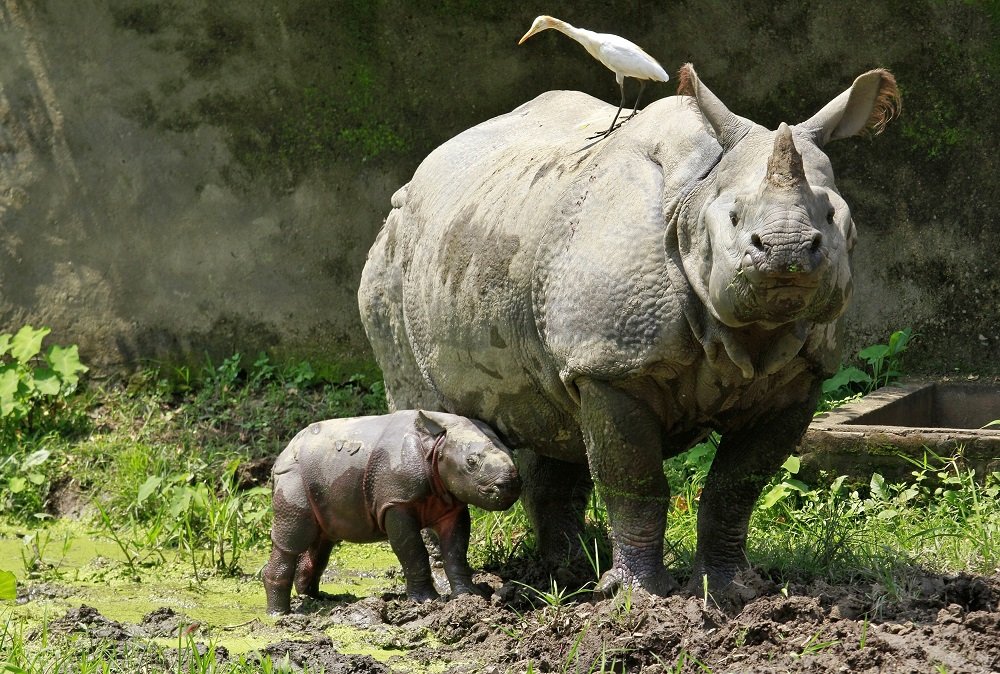
More popular for one horned Indian rhinoceros, Kaziranga National Park is a UNESCO world heritage site. As a matter of fact this park has the highest density of tigers among the protected areas in the world but for tall grasses, you have to be lucky to be able to spot one of them easily.
The tall grasses provide amazing camouflage to the tigers and in this park remember they are the ones watching you from everywhere. You may find the evidence by way of many pug marks, kills etc.The park also hosts elephants, Hoolock Gibbon, Leopard,swamp deer and wild water buffaloes apart from other species.
Sprawling over an area of 430 sq km, the park has some pre-defined tourist circuits where the jeep safari takes place;Mihimukh in Central Range at Kohora, Bagori in Western Range at Bagori, Agaratoli in Eastern Range at Agaratoli and Ghorakati in Burapahar Range at Ghorakhati. You also have the option of elephant safari here.
Marshland, dense tropical forest and tall elephant grass does make the park look dramatic but its the presence of Bramhaputra river , which brings action to life. Park remains closed from May to October during monsoons due to the fear of floods in Brahmaputra. So plan your north east trip accordingly.
-
Sunderbans National Park
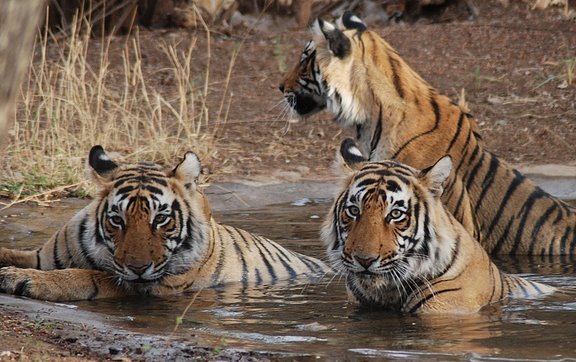
Bengal tiger (Photo credits- tribuneindia)
Sunderban, cluster of low lying islands in Bay of Bengal derives its name from Mangrove plants, Sundari. It is the largest river delta in the world formed by Ganga, Brahmaputra and Meghna with 60% of it in Bangladesh. 2585-sq-km of the Indian Sunderbans forms the largest Tiger Reserve and national park in India. Network of channels and semi submerged mangroves provide the ecosystem for close to 300 plus Royal Bengal tiger where they hide in the fathomless mangrove forests and swim across the various delta’s channels.
Although they do sometimes kill villagers and their livestock, tigers are typically shy and sightings are rare. Nonetheless, a UNESCO world heritage site, Sunderbans has lots to offer in terms of cruising waterways through world’s biggest mangrove swamps & estuary witnessing aqua fauna, marine life and unique diversity. To get to the Sunderbans national park in India the nearest airport is Calcutta, the nearest railway station is Canning, and the nearest town is Gosaba. The only means of travelling within the park is by boat.
Sunderbans has been the perfect example of man vs wild (by national geographic) given that the delta region is home to 4.5 million people and is vulnerable to climatic changes.Let us hope that we continue to conserve this bio reserve and the national park amidst challenges.
Hemis National park in Laddakh
Why go after only tigers and lions of the world, have you ever seen a snow leopard in the wild? The Hemis High Altitude National Park, on the banks of Indus river in Ladakh ( Jammu Kashmir region) is the world famous snow leopard reserve. It came under the conservation project with the aim of conserving rare species, its prey base and the mountain ecosystem. This national park is near the famous Hemis monastery in Ladakh. You may not find many options for accommodation but for dormitories and tents.
Presently it is mostly visited by trekkers, you may find adventure treks being organised for scouting snow leopards and visiting the beautiful Hemis National Park . Other popular species in the region are Himalayan weasels, blue sheep, wolves, red foxes, two , woolly hares, golden eagle, Himalayan griffons etc. Hemis National Park is approachable by road from Leh. Would only say that this Park visit is more suitable for true adventure seekers due to high altitudes hence please make sure that you have the required fitness levels.
Tips to make the most of your wildlife park visit
- Having gone through the safari experience and bookings, I would suggest that the best way is to try and book the forest guest houses and accommodations wherever possible and available if you are more interested in wildlife and less in the facilities and amenities provided by the various hotels/resorts. These accommodations are relatively cheaper and mostly located within jungle hot spots.
- Book your safari well in advance, in some places 6 months in advance
- Ideal time for most jungle visit is from October-November to May-June. Summers being the best for sightings of animals around water resources.
- Photography enthusiasts- Take as many safaris as possible and patience is the key.





